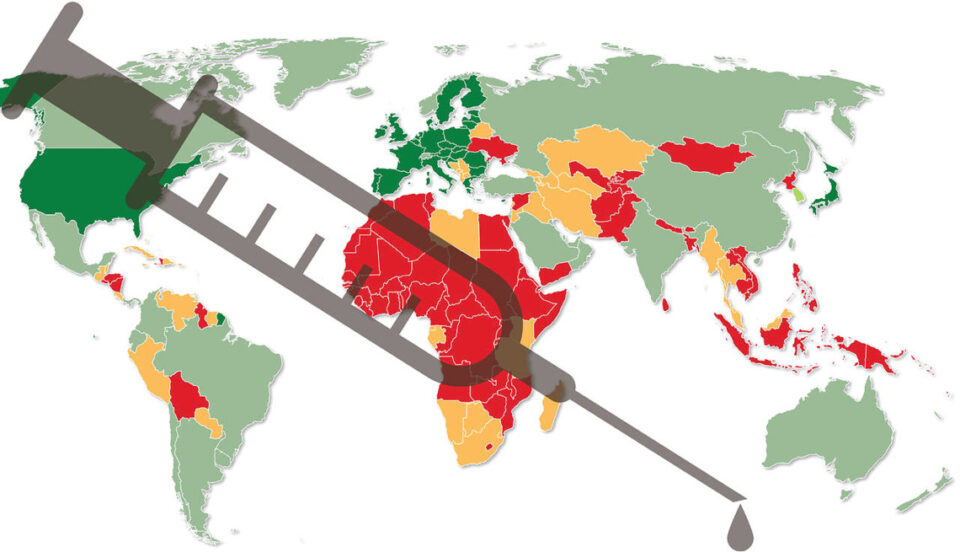
When the coronavirus made its global breakthrough almost a year ago, there was one characteristic in particular that both frightened and fascinated the new disease:
Covid-19 did not discriminate between president and postman, between Danes and Kenyans.
Social status was no protection against coronavirus. Neither was nationality. Here, for once, was a catastrophe that, in all its morbidity, created equality.
The same was true in part of the draconian restrictions that have proved necessary to contain the infection: All countries have – to varying degrees – suffered economic setbacks as a result of various shutdowns. For once, the peoples of the world were for better or worse in the same boat.
It’s all over now.
Because while the virus does not discriminate between rich and poor, there are completely different rules in the hunt for the vaccines, which must get the world out of the clutches of the pandemic. Here the law of the jungle prevails – and to an extreme degree.
In fact, the world’s richest countries have already settled on more than half of the doses expected to hit the market in 2021, writes The New York Times.
While many poor countries can at most hope to vaccinate 20 percent of their populations over the next year, the rich countries have reserved enough doses to vaccinate their own populations several times.
If all the doses are actually delivered, the EU can vaccinate its populations twice. Britain and the United States can vaccinate their citizens four times, and Canada can vaccinate six times, according to The New York Times’ analysis.
Thus, countries that, due to their wealth, have pushed themselves to the front of the vaccine queue, can also look forward to getting out of the financial dead end already in March or April, into which the corona restrictions have sent the world economies.
Poor countries, on the other hand, can look forward to becoming even poorer, all the while the virus continues to rage.
The green zone
According to The Economist’s calculations , very few countries in the world, including EU Member States, the United States and a few others, will have widely available vaccines for the entire population during the spring.
These are the dark green countries on the map below, and if you only look for Denmark’s location, it looks like a happy Christmas story.



